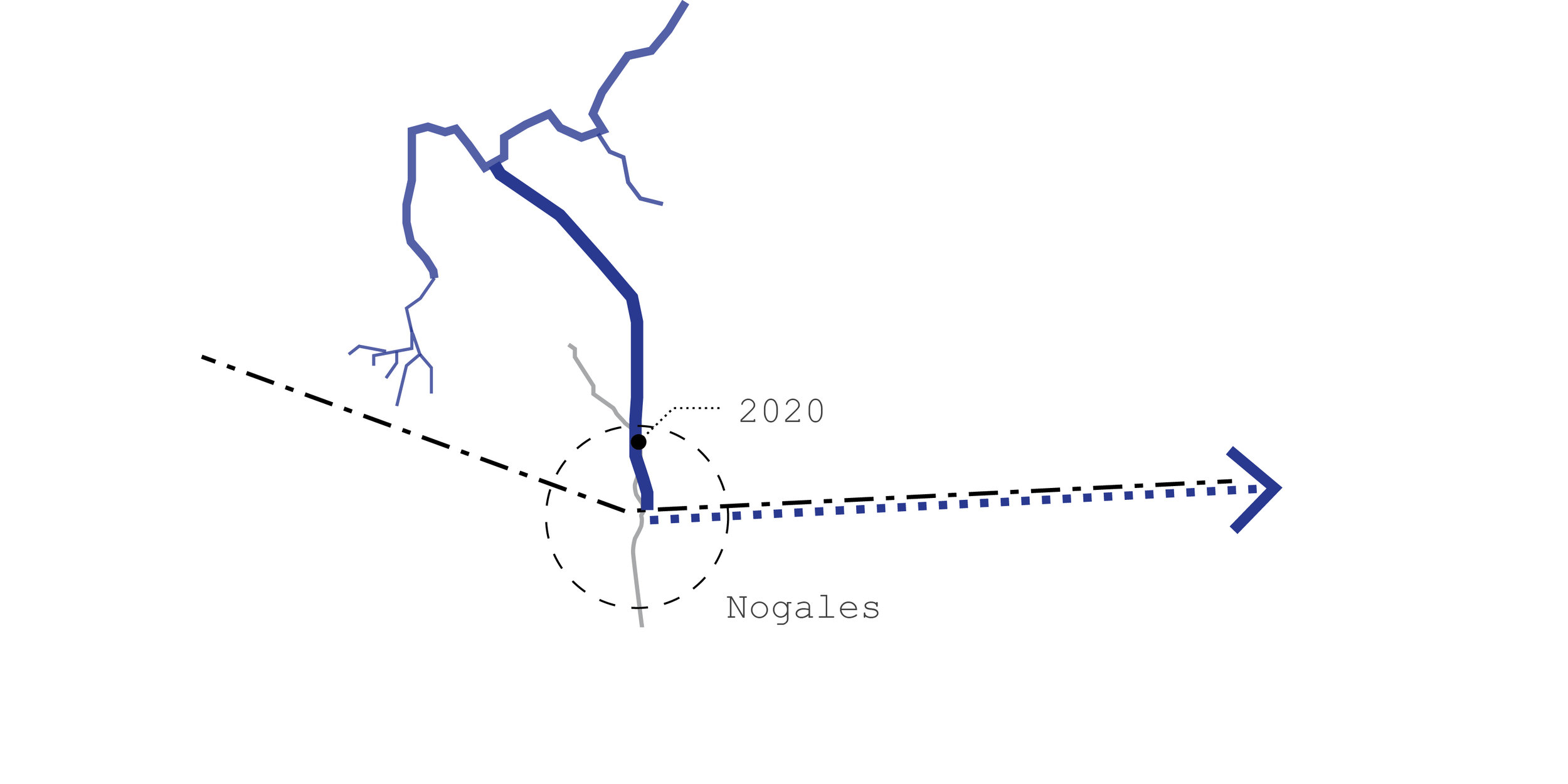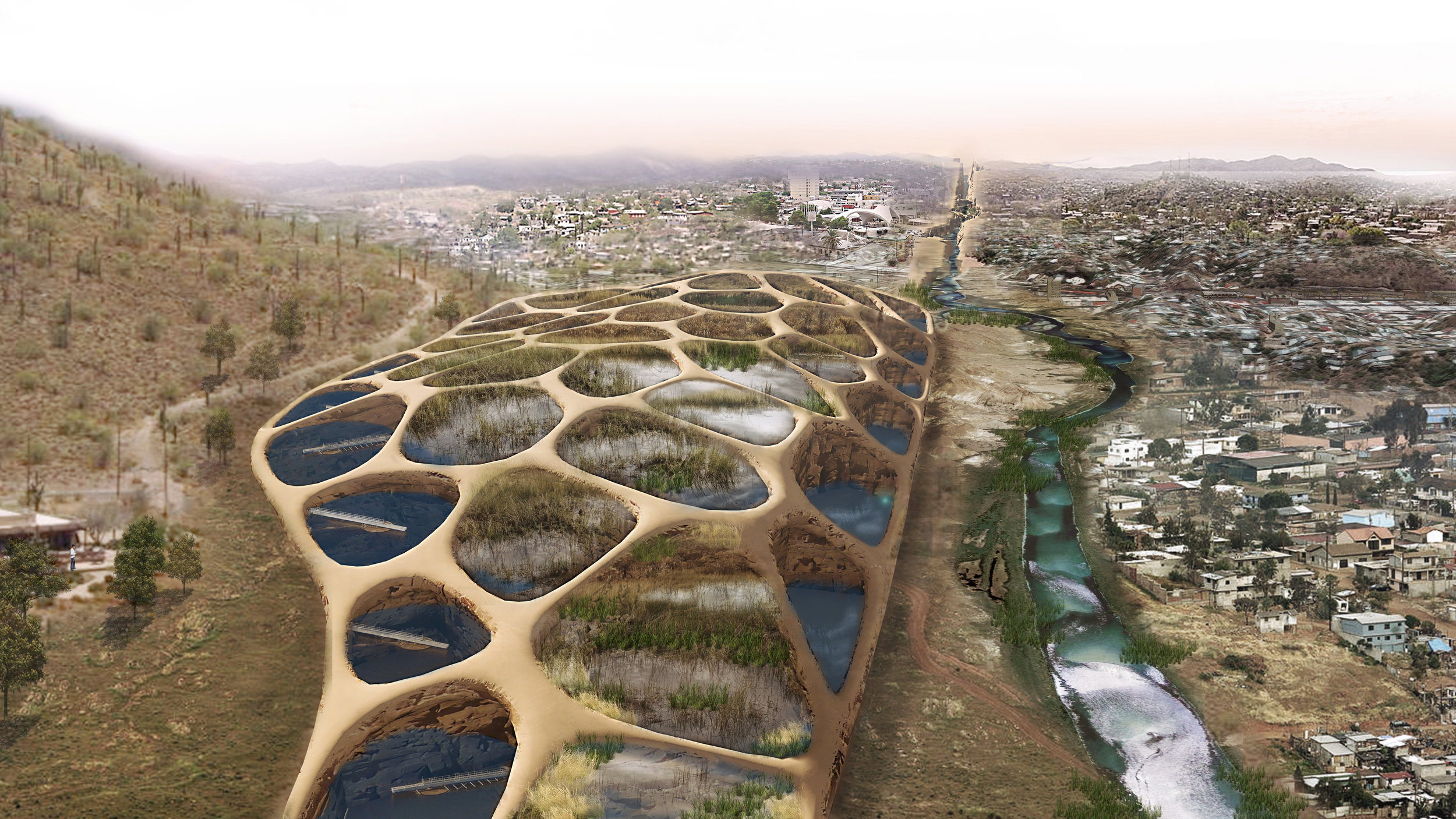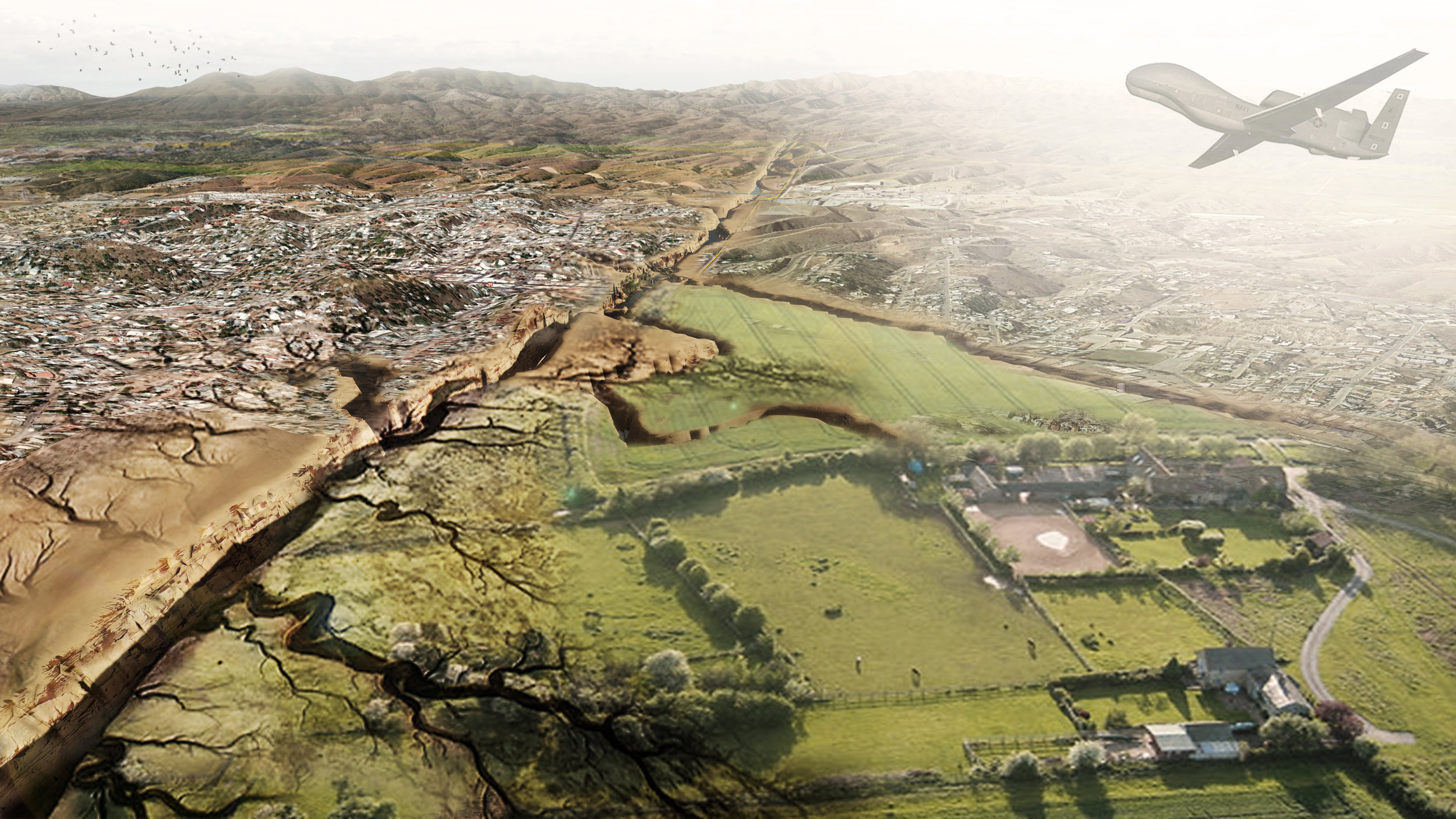Stephanie Tabb
ARCH + TECH
why
OPPORTUNITY
Our proposal incites the systemic confluence of the Colorado River, the Nogales Water Treatment Plant, and local water distribution systems into a border river-- a socially inclusive, non-aggressive, and resilient border that leverages the opportunity to share an international resource between the USA and Mexico. This occurs through a series of tactics -- water, erosion, and technology.
WATER
During the 1900’s, multiple dams were built on the Colorado River, directing it so that the USA would receive more water than Mexico. In some border cities, potable water will run out by 2025. Aging infrastructure and a booming population in Nogales has resulted in significant water shortages. The existing, deteriorating water treatment facility is located 10 miles north of the existing Nogales border checkpoint. It was only designed to process 8.2 million gallons of water a day but instead processes 17 million.
EROSION
Bacillus pasteurii, a bacterial micro-organism, will transform the loose sand into a fibrous, porous structure. This controlled injection will transform the border into an organic, inhabitable sandstone structure with canyons and bridges.
0 - existing soil
1 - inject bacterial micro-organisms
2 - sand calcifies and erodes
3 - habitable sandstone bridges
TECHNOLOGY
Surveillance technology including radar detection and facial recognition will eliminate the need for a physical barrier and control the flow of people between the two countries.
design process
I led the team in a computational design workflow, which helped us to understand the existing site and inform a site-specific design response. To begin, I used Flux’ web-based Site Extractor to develop a 3D site model. I pulled this topographic geometry into Rhino3D using Grasshopper visual scripting.
I then developed a computational tool to study the local watershed. Through this, we discovered that the border between the USA and Mexico often follows the existing drainage divide between the two countries. Our project harnesses the existing local watershed and excavates it to create a shared water resource.
1 - Flux Site Extractor
2 - Flux Data Explorer
3 - Import Flux Data into Rhino3D using Grasshopper
4 - Existing 3D topographic model
5 - Local watershed found using Grasshopper
6 - Follow the local watershed to excavate a shared water border
PHASING
1920 - 2017 | CURRENT - In 1931, the USA began construction on the Hoover Dam. This redirected the Colorado River so it no longer flowed into Mexico, but instead to US cities like Los Angeles.
2020 | REDIRECT - Redirect water from the Colorado River.
2030 | INJECT - Redirected water and injection of bacterial micro-organisms transform loose sand into sandstone formations of bridges and canyons.
2040 | BUILD + MERGE - Build an addition to the existing Nogales Wastewater Treatment Plant and merge this water with water from the Colorado River.
2050 | EXTEND - Veins of water and farms extend from the water border. Community pool is developed as a shared social space.
design
wastewater treatment plant
wetlands
bridge
farms






















